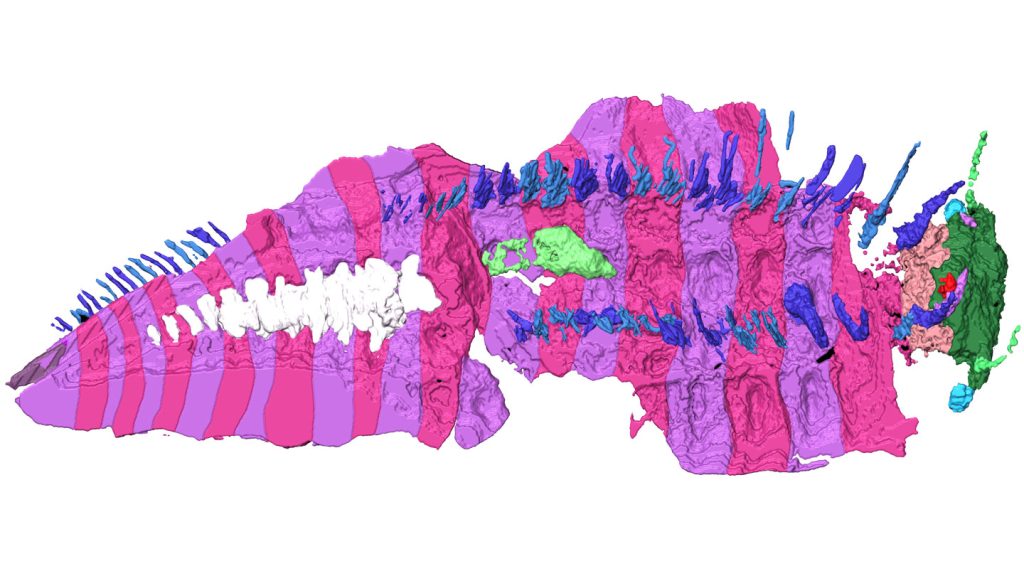Scientists have recently discovered two fossils that shed new light on the anatomy of Arthropleura, the largest arthropod ever known to exist. This giant millipede lived between 346 million and 290 million years ago and grew longer than a king-sized bed. The discovery of these fossils is significant because, despite Arthropleura being discovered in 1854, no previous fossil had included a head. Micro CT scans of the fossils, unearthed from present-day France, reveal never-before-seen details about the giant millipede’s anatomy, including its antennae, eyes, mandibles, and other feeding appendages.
The findings challenge previous assumptions about the anatomy of Arthropleura. Scientists had previously assumed that Arthropleura would have had a head more similar to its modern millipede relatives. However, the newly discovered fossils show a more intermediate state in the lineage’s evolution, with a head that resembles that of a centipede. The mouthparts are particularly centipedelike. Despite these similarities to centipedes, anatomical observations as well as phylogenomic data place Arthropleura in the millipede camp. This new information provides valuable insights into the evolutionary history of these ancient creatures.
While the specimens provide a wealth of information about Arthropleura, there is still much left to learn about this ancient millipede. One of the remaining mysteries is what Arthropleura might have eaten and whether it walked on land, underwater, or was capable of both. The new fossils also reveal that Arthropleura had stalklike eyes, similar to a crab, suggesting that the creature may have had a lifestyle that involved water. Additionally, scientists are unsure whether both sexes of Arthropleura grew to enormous sizes or how long it took juveniles to reach full size.
The discovery of these fossils has opened up new possibilities for research and further exploration into the life of Arthropleura. The fossils provide valuable insights into the anatomy and evolutionary history of this fascinating creature. With the new information gained from these fossils, scientists can continue to piece together the puzzle of Arthropleura’s existence and better understand its place in Earth’s history. Who knows what the next new finding might reveal about this gigantic millipede and its unique anatomy and behavior? Further research will undoubtedly bring more discoveries and a deeper understanding of this ancient arthropod.
The importance of these fossils lies in the fact that they provide a missing piece of the puzzle when it comes to understanding the anatomy of Arthropleura. Despite being known since 1854, the lack of a fossil that included a head hindered scientists’ ability to fully comprehend the anatomy of this giant millipede. The discovery of these well-preserved fossils and the subsequent micro CT scans have revealed new details about Arthropleura’s anatomy that were previously unknown. This breakthrough in research has the potential to reshape our understanding of these prehistoric creatures and their place in the evolutionary timeline.
In conclusion, the discovery of these two important fossils has provided scientists with valuable insights into the anatomy and evolutionary history of Arthropleura. The new information challenges previous assumptions about the creature’s anatomy and lifestyle, opening up new avenues for research and discovery. By studying these fossils and conducting further research, scientists can continue to unravel the mysteries surrounding Arthropleura and gain a deeper understanding of the world’s largest arthropod. The discovery of these fossils marks a significant step forward in our knowledge of these ancient creatures and their place in the history of the Earth.


